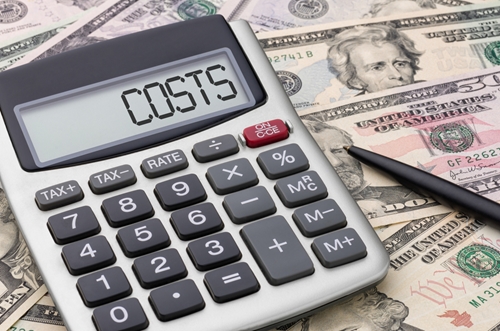If you aren’t a big fan of math, you’re not alone. An article in Psychology Today explained that almost 80 percent of college students described math as a skill they felt they couldn’t figure out. Even if math isn’t your thing, there are going to be quite a few instances where you need to crunch numbers as a dance studio owner. Yes, your calculator can help, but it’s important to understand the basic formulas and processes behind some standard small business profit calculations. Here’s some must-have math that studio owners need to know.
Calculating Gross Profit
Here’s that illustrious word that all studio owners hope for but many fail to achieve: profit. If you’re going to run a business and keep your doors open, you’ll need to know how to calculate gross profit, or the money you’ve earned from selling a service. The seemingly simple equation for gross profit is sales minus cost of services sold.
For studio owners, profit calculations are usually quite simple. Your revenue for a given season – or the money you collected from students – is your sales, and then you subtract any variable costs. Since you’re selling a service instead of a product, your variable costs will likely only include the salaries of hourly teachers, materials used in class and other expenses that incur as a direct result of holding class. Leave any fixed costs – such as full-time employee salaries, rent or mortgage payments, insurance, marketing costs or office expenses – out of this calculation.
So for example, if you charge $500 per student, and you teach 20 students this season, your revenue will be $10,000. If you spend $4,000 on variable costs, your gross profit would be $6,000.
Finding Your Gross Profit Margin
The next step in the important financial calculation is to figure out your gross profit margin, which is your gross profit expressed as a percentage of your revenue. Don’t worry – it sounds harder than it is!
To calculate gross profit margin, simply divide your gross profit by your sales, and then multiply by 100. Following the example above, $6,000 divided by $10,000 is 0.6. Multiple this by 100, and you get your gross profit margin of 60 percent.
Using Gross Profit and Gross Profit Margin
You may think that you’re in the clear if your gross profit increases year after year, but this isn’t always the case. Your gross profit margin is actually a better indicator of how efficiently your business is performing. If you notice that your gross profits are increasing but your margins are on the decline, this indicates that your spending is outpacing your revenue growth. Be wary of this trend! If your costs grow too fast, you could be heading for financial trouble.
Crunching Net Income Numbers
As you may have gathered, gross profit isn’t equivalent to the amount of money your studio is left with at the end of the year. You still need to take into account those fixed costs that remain stable from month to month. According to Entrepreneur magazine, these expenses include:
- Rent
- Utilities
- Office supplies
- Marketing
- Your salary
- Wages of full-time workers
- Taxes
- Insurance.
Once you’ve added up all these fixed costs, you’re ready to find net income. Subtract this number from the gross profit you’ve calculated. So if your fixed costs are $5,000 and your gross profits were $6,000, your net income would be $1,000. This may not seem like a lot of money, but it’s always a good thing when your business has a net gain at the end of the year. If your net profit turns out to be a negative number, this means you’ve sustained a net loss, and you’ll need to find a way to lower your costs or increase your revenue.
Check back soon for more math-related tips that are key for studio owners!



